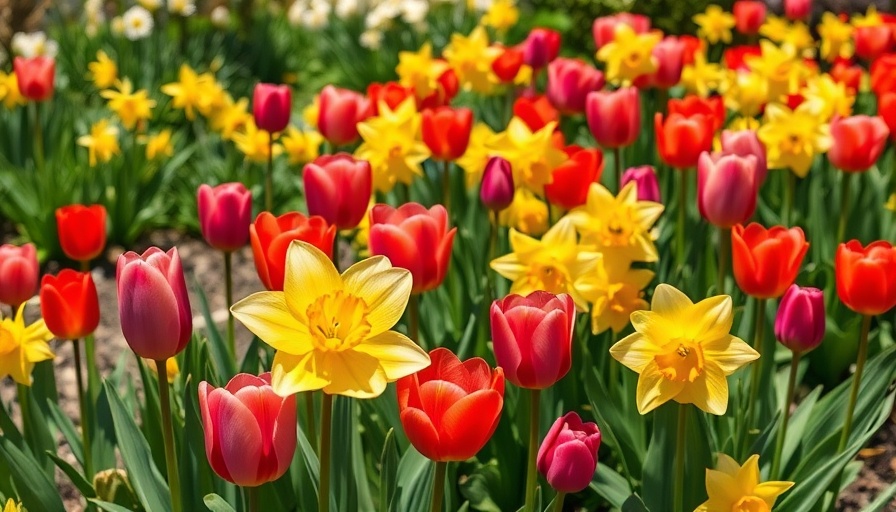
Unlock the Magic of Spring with Companion Planting
Tulips and daffodils are not just harbingers of spring; they represent a riot of color and life in your garden. But to maximize this experience, companion planting can elevate the aesthetic and health of your garden. Selecting the right partners for these vibrant bulbs transforms a simple display into a dynamic showcase, ensuring that your yard is a living tapestry year-round.
The Importance of Companion Plants
Companion plants are essential for several reasons. As tulips and daffodils bloom, their foliage remains vital for energy storage, remaining green well into the season. However, their leaves may not always be the most attractive feature. That's where companion plants come in. They provide visual contrast and cover the bulbs' fading foliage, enriching the garden's aesthetics.
Moreover, companion plants can extend the blooming season beyond the initial burst provided by tulips and daffodils. By planting a mix of early, mid, and late bloomers, you'll create a rolling display of color that draws the eye and pleases the senses throughout the spring and summer.
Recommended Companion Plants for Tulips and Daffodils
When choosing companions, look for a mix of annuals and perennials that can bloom simultaneously or back-to-back with your bulbs. Here are some standout selections that work beautifully with tulips and daffodils:
1. Hostas (Hosta spp.)
With broad, beautiful leaves, hostas provide cover for fading tulip foliage. They thrive in partial to full shade and bring a variety of textures to the garden. Hostas bloom beautifully with tubular flowers, attracting pollinators throughout the summer.
2. Wood Fern (Dryopteris spp.)
These ferns add a lush backdrop and can thrive in a variety of conditions, making them great companions. Their dense fronds cover the ground and any old bulb foliage beautifully, while requiring little maintenance.
3. Glory of the Snow (Scilla luciliae)
This early bloomer is perfect for planting at the base of tulips, adding a carpet of blue to the display as the tulips rise and fade. It thrives in full sun to partial shade and creates a stunning visual contrast.
4. Allium (Allium spp.)
With globular flower heads that bloom after tulips, alliums serve as excellent vertical accents in the landscape. They provide continuous interest and can grow from 6 inches to 4 feet high, adding dimension to your garden.
5. Daylilies (Hemerocallis spp.)
Blooming just as tulips and daffodils fade, daylilies will camouflage old foliage while bringing a burst of color with their vibrant blossoms. Their long, strappy leaves also contribute to the garden's texture.
6. Pansies (Viola x wittrockiana)
Pansies are one of the most cheerful spring flowers. They withstand late frosts and can be planted alongside bulbs to maintain color in the garden while old tulip foliage gradually disappears.
Actionable Insights for Planting
When planning your spring flower arrangements, consider the layers and heights of your chosen plants. You can utilize your local resources to learn more about planting seasons and techniques specific to Muskegon. For instance, you can easily start a backyard planting box Muskegon to extend your planting space. Building elevated planter boxes can also provide a stunning focal point while maximizing your garden area.
To make the most of your gardening efforts, consider constructing outdoor soil beds Muskegon or incorporating other elements into your outdoor space, such as a handmade storage shed or a garden entry frame.
Conclusion: Creating Your Dream Garden
By interplanting tulips and daffodils with these vibrant companions, you not only hide fading foliage but create a truly picturesque landscape that stretches through the seasons. Dive into the world of companion planting to enhance your garden’s beauty. Let this spring be the beginning of your elegant outdoor masterpiece, and inspire others in your neighborhood to join in this delightful endeavor!
 Add Row
Add Row 
 Add
Add 


Write A Comment